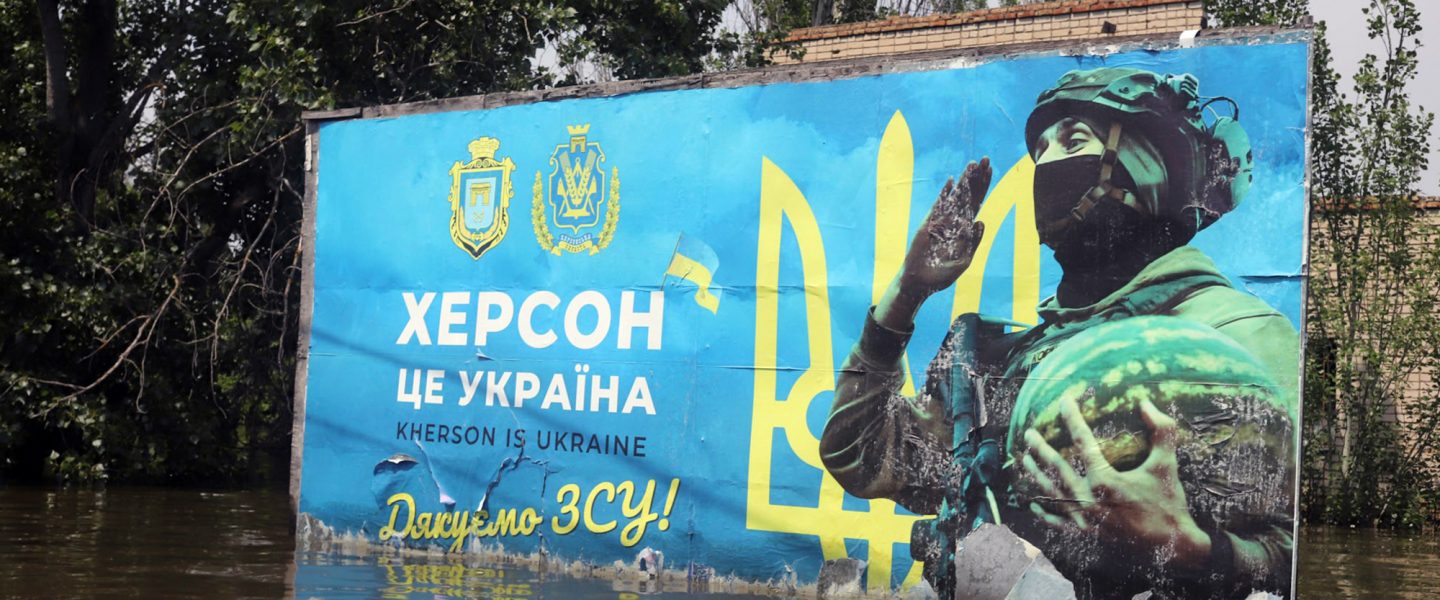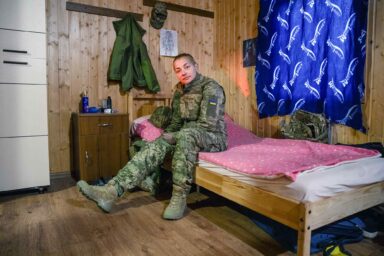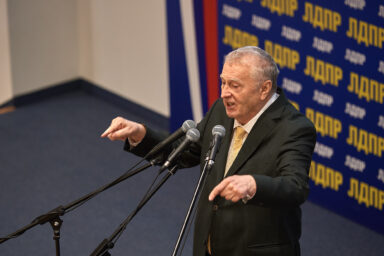With the collapse of the Kakhovka dam, Kherson became a disaster zone overnight. But very close by, the restoration of a destroyed village on the war’s front line shows Ukraine’s determination to rebuild.
|
Listen To This Story
|
KHERSON REGION, Ukraine — “Leave Kherson immediately,” said the WhatsApp message from Jaroslav, a local Ukrainian press liaison who had been organizing our trip around the city on Thursday, as it popped up on my phone screen. A hard-bitten officer whose profile picture shows him with Sean Penn — both dressed in body armor and helmets, smoking cigarettes — Jaroslav had helped arrange our visit to the city. He would not have told us to leave if the situation was not critical.
Ever since Kherson was liberated by Ukrainian forces in November last year, Russians have shelled the city constantly from positions on the east side of the Dnipro River, which the Russians occupy. But Ukrainians had hoped that the flooding from the destruction of the Nova Kakhovka dam on Tuesday would force the Russians to abandon their artillery positions and relieve the pressure on the city.

Instead, beginning around 1:30 p.m. on Thursday, Kherson had again been pounded by long-range Russian Grad launchers, with rockets exploding within hundreds of meters of where civilians had gathered to evacuate. Other rockets landed in the water, where volunteers on speed boats had been rescuing people from the flooded areas and bringing them to safety. At least one person was killed and 10 were injured in the attack. There were no Ukrainian military positions visible near the targets of the shelling. The only troops present were those who had been drafted in to help with the logistics of evacuation.
Despite the extraordinary dangers, the Ukrainian rescue workers, most of whom are unpaid, were undaunted. “Of course, I knew it was dangerous,” said Kateryna Poniaieva, a coordinator working in Kherson with the organization Rebel Volunteers. “But I am hurt by what the Russians are doing to my country … and I can tell you that every city [in Ukraine] is dear and important to me now.”
“Many people are left without a home, without clothes, even without documents, but they protected their animals and saved their lives,” Poniaieva said.

In Kherson, under regular Russian artillery fire, Poniaieva’s team has mainly been evacuating animals, as most civilians were being evacuated on trains and buses. She said that her team had evacuated 10 puppies and 13 cats the previous day.
President Volodymyr Zelenskyy, who also visited the city on Thursday, blamed the Russians for bombing the dam. He said, “What is happening right now is a tragedy. An environmental disaster and human tragedy … People and animals have died. People stuck on the roofs of their houses can see those who have drowned flowing past them. It is extremely hard to evacuate people from the occupied part of Kherson Oblast. When our people try to save them, the occupiers launch attacks.”
On Tuesday, immediately after the dam broke, I had driven to northern Kherson Oblast but was stopped at the last checkpoint before the flooding zone, when the men mobbing the post told me it was “too dangerous” to drive further.
The Ukrainian soldiers at the checkpoint, which was near the front-line town of Beryslav on the Ukrainian side of the Dnipro River, told WhoWhatWhy that Ukrainian villages all along that side of the river were experiencing huge amounts of shelling from the Russian occupied east bank. These attacks were making it difficult to evacuate people from the flooded town. While these soldiers were not authorized to speak on the record, their commander showed us a video of a small village near Beryslav that had been completely covered by floodwater.

The riverbank is lower on the Russian occupied side of the Dnipro, and Ukrainian authorities believe that the flooding situation there is even worse. The commander told us that the Russians were refusing to let Ukrainians whose homes had been destroyed leave through Russian checkpoints.
Despite the horrific situation, however, the situation in the region is not completely bleak. The village of Posad-Pokrovske is a 20-minute drive from Kherson City. It was on the front line of the war in this region for nearly 10 months. When I visited it in November, it was an icy wasteland, almost completely abandoned. There wasn’t a single building that had not been damaged. It looked like the town of Bohorodychne in the Donbas Oblast, which was almost completely wiped out.
When I visited the town of Posad-Pokrovske on Wednesday, however, I came upon a large construction project. Workers were rebuilding houses, and we saw some electricians putting up power lines and telephone poles. The builders said they had been working in the city for seven months, beginning almost immediately when the village was liberated.

“Don’t worry, it’s clean here!” said Sergey Tabachkovskiy, a 20-year-old resident of Posad-Pokrovske, as he welcomed us into his family home. Here, the word “clean” has a double meaning, and in this case it meant that the house has been cleared of mines and unexploded ordnance. Tabachovskiy pointed to a knot of red and white plastic that was attached to his front gate. Demining teams in Ukraine leave such knots to designate that a dwelling is safe.
“We left for Mykolaiv one week after the full-scale invasion,” Tabachovskiy explained, “but we returned to Posad-Pokrovske on November 16.” That was two weeks after Russian troops retreated from the town. When his family came home, their house was a complete ruin, he said. Their street had been a front-line Ukrainian position. “Russian soldiers were in the street next to us, just two or three kilometers away,” Tabachovskiy said.
Now, Tabachovskiy’s whole family, including his parents and two siblings, have returned to restart their lives here. They’ve already repaired the roof and windows of their house, and two builders are fixing their outhouse. Tabachovskiy’s father is digging a basement in their backyard, as they might need a bomb shelter in case the Russians come back.

Tabachovskiy told me that the town is beginning to return to normal. Small shops had reopened. I saw three well-dressed young women walking down a side street. They stopped to chat and take photographs. It was a kind of normality that was unthinkable just a few months ago. Posad-Pokrovske had about 2,500 inhabitants before the war. Tabachovskiy said that about 500 or 600 of them had returned.
The roads leading out of the city were freshly paved, and a group of mechanical diggers were lying idle at the town’s entrance, ready to carry on the work of rebuilding. This stunning turnaround in fortunes for a town that many would have considered unsalvageable shows how Kherson and the front-line towns around it could look forward to if Ukraine can push back Russian artillery and recover from the flooding.
“We just want to live in our country and not be afraid that we can die every moment,” Poniaieva, the Rebel Volunteers coordinator, said.




